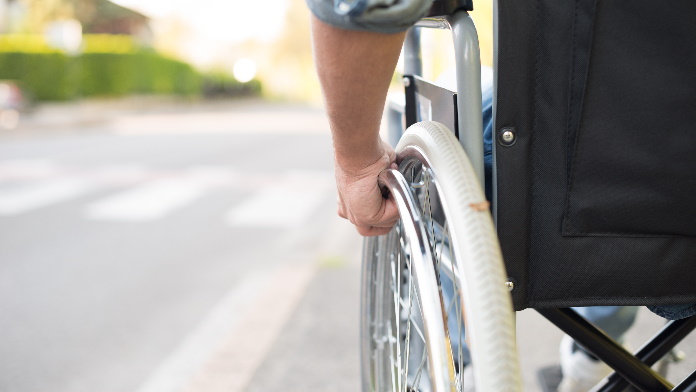L’Friedreich’s ataxia it is a rare and neurodegenerative genetic disease that affects, in addition to the central and peripheral nervous system, the heart and frequently other systems such as the endocrine one. The most frequent age of onset is early adolescence, but there are rare cases with very early onset (preschool age) and others with late onset (over the age of twenty).
It is a disease inherited as an autosomal recessive trait, with equal risk for males and females, but requires that both copies of chromosome 9 carry a mutation in the FXN gene which encodes the protein frataxin, important for the function of mitochondria, our cellular energy plants. The mutation is transmitted to children from asymptomatic carrier parents.
Andrea Martinuzzidirector of the Complex Neurorehabilitation Unit for the developmental age and young adulthood of the Veneto Center of the IRCCS Eugenio Medea-Associazione La Nostra famiglia in Conegliano-Pieve di Soligo, explains better what it is.
What are the symptoms of Friedreich’s ataxia?
Uncertainty in walking and in actions requiring coordination they are the first signs of the disease. Even before neurological manifestations, boys present bone dysmorphisms come scoliosis e cavus foot. The disease then proceeds making it increasingly difficult to move, speak and use your hands precisely.
The speed of progression varies, in relation to the size of the gene expansion, with an average time from onset to loss of walking of approximately 15 years. At the same time, cardiac involvement proceeds in a more subtle way, with a hypertrophic cardiomyopathy which progressively reduces the functionality of the heart and which is in the majority of cases the main cause of death for these patients.
Other signs often present are diabetes, visual and hearing difficulties, urination disorders.
How is it diagnosed?
The diagnostic suspicion comes from the clinic (signs of incoordination, loss of reflexes, age), the confirmation comes fromgenetic analysis on DNA, usually extracted from blood, which reveals expansions in alleles of the FXN gene. The frequency of the carrier condition in the European population is approximately 1/85, therefore a blanket preventive test is neither feasible nor useful. However, it is possible to confirm or not the carrier condition in the parents and siblings of patients and it is possible to pre-natal diagnosis.
What treatments are available for Friedreich’s ataxia?
A new drug arrives: omaveloxone
If until a few years ago there was no effective therapy for this disease, today it has been approved in the European Union omaveloxolone, the first treatment for this rare and neurodegenerative genetic disease. Biogen has announced, in fact, that the European Commission has authorized the use of this drug in adults and adolescents aged 16 years and older.
The approval of omaveloxolone is based on data from the placebo-controlled MOXIe part 2 study. At the end of 48 weeks, patients who received omaveloxolone had better scores on the modified Friedreich Ataxia Rating Scale , mFARS) compared to the placebo group.
In particular, swallowing ability (bulbar function), upper extremity coordination, lower extremity coordination, and standing stability were favorable to omaveloxolone compared to placebo. «People with Friedreich’s ataxia treated with omaveloxolone have recorded relevant and clinically significant improvements in everyday life. Omaveloxolone has the potential to usher in a new era in disease management,” he comments Sylvia Boeschprincipal investigator of the MOXIe study.
Symptom management
The evolution of scoliosis can lead to having to correct the curvature with carefully planned interventions considering the surgical risk. In patients with spasticity, drugs such as can be used botulinum toxin. They must be inserted in relation to the clinical progress antiarrhythmic and cardiac drugs capable of at least partially compensating for cardiac dysfunction or, in the case of diabetes, the antidiabetics.
We then proceed with a combined rehabilitation intervention (physiotherapy, occupational therapy, speech therapy, identification of aids), individualized and aimed at relevant and realistic functional objectives. To this basic strategy, attempts are being made to associate neuromodulation techniques such as transcranial electrical stimulation.
The average life expectancy for these patients is approx 40 years and the quality of life is strongly influenced by motor disability. It is important to count on a rehabilitation team, also expert in psychological support, which involves the family if necessary.
